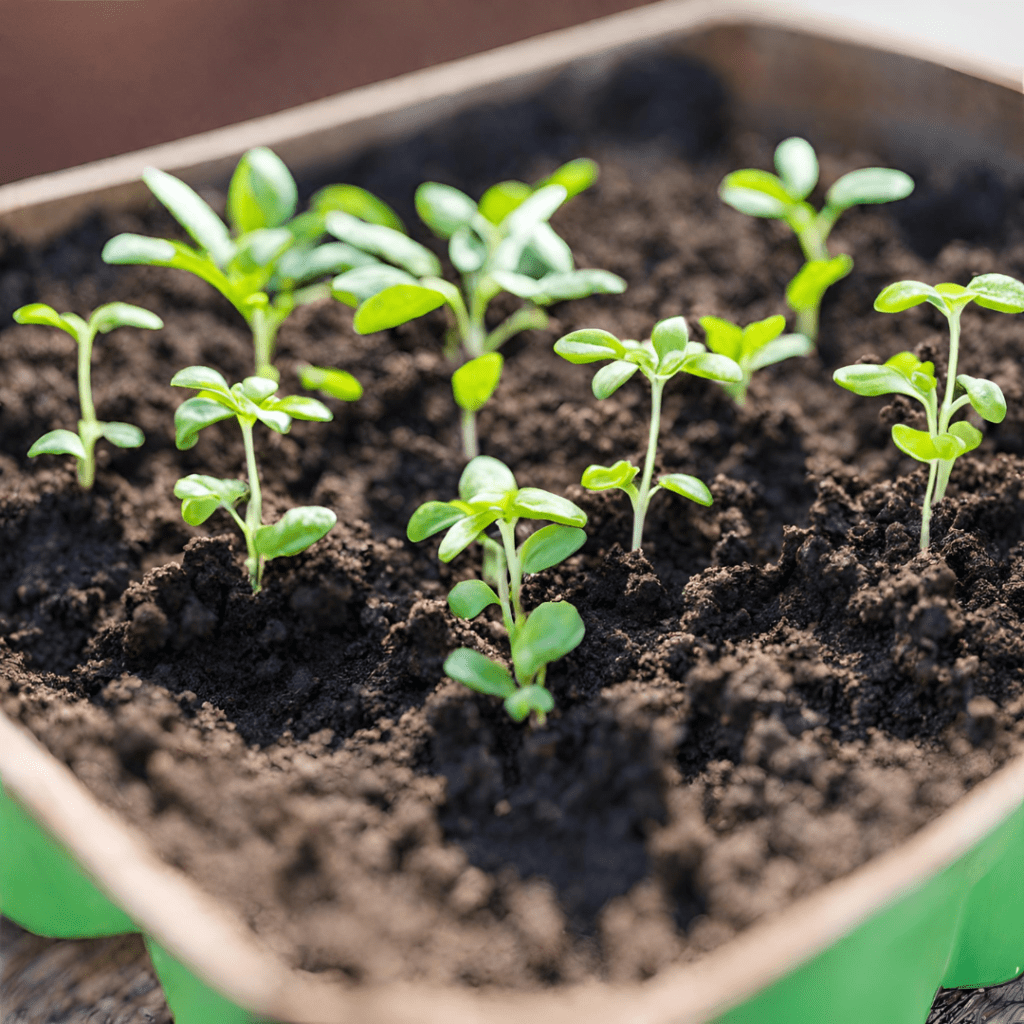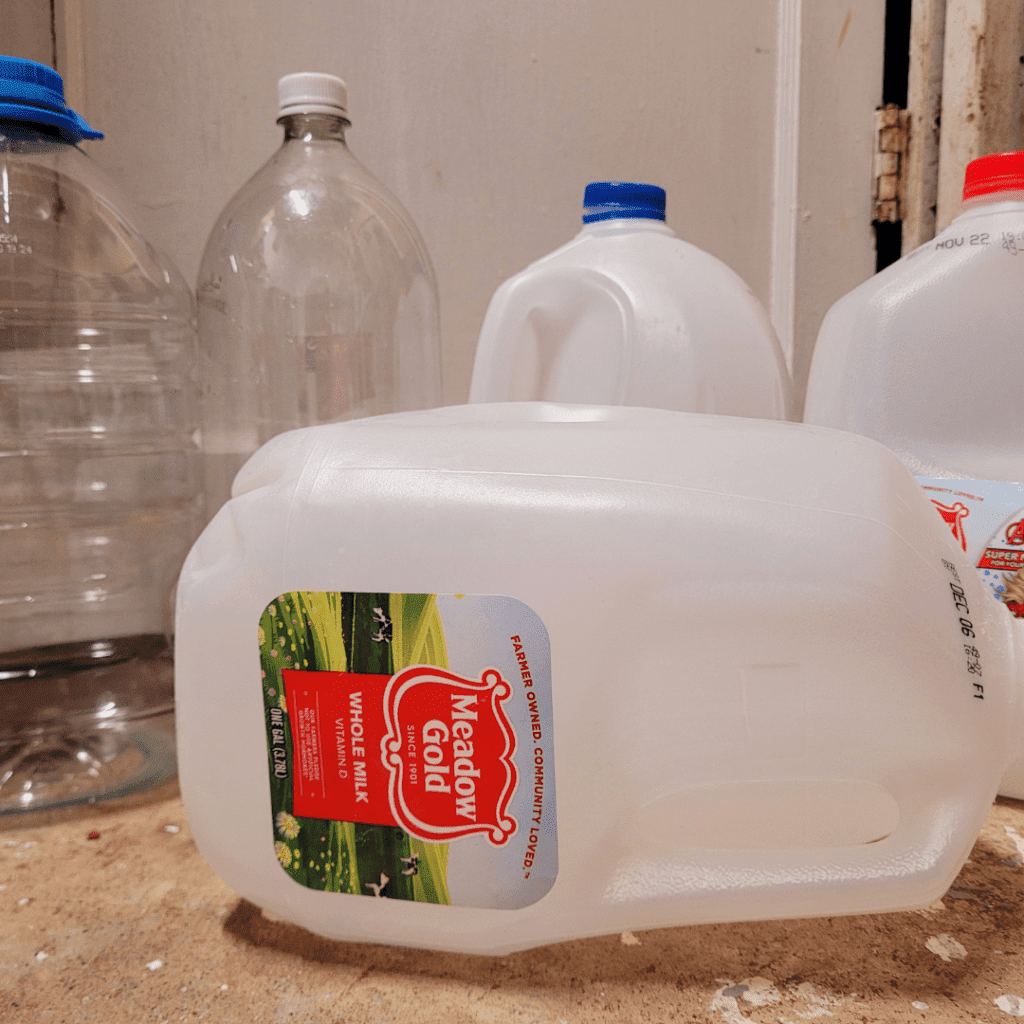Learn how to grow cold-hardy greens for winter sowing and enjoy a garden that thrives even in chilly weather. By starting greens like kale, spinach, and Swiss chard in containers during the cold months, you’ll produce resilient seedlings that sprout at the right time, adapt naturally to outdoor conditions, and give you a healthy, early harvest in spring.
Cold Hardy Greens are a group of leafy vegetables that thrive in cooler temperatures and are ideal for winter growing. While many gardeners associate winter with a dormant period for their gardens, growing cold hardy greens through winter sowing can provide a fresh and nutritious harvest even in the coldest months. This article will guide you through the process of selecting, sowing, and caring for cold hardy greens during winter, enabling you to enjoy a bountiful supply of greens throughout the chilly season. Discover the benefits of winter sowing, learn about the best varieties for cold climates, and explore effective techniques to successfully grow and maintain cold hardy greens in your garden during winter.
This is a pinnable post. Tap or hover over any image in this post to pin to your Pinterest Boards.
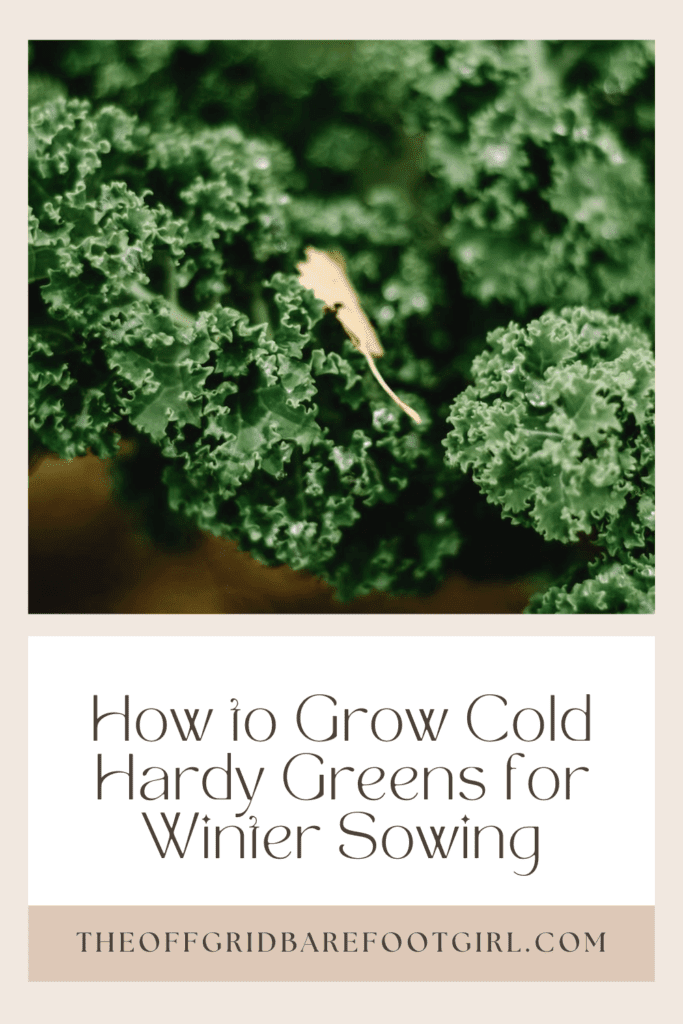
Introduction to Cold Hardy Greens
Winter is coming, but that doesn’t mean your garden has to go into hibernation! Cold hardy greens are the superheroes of the vegetable kingdom; they can withstand frosty temperatures and keep your plates filled with fresh, nutritious greens throughout the winter months. In this article, I will dive into the world of these hardy leafy greens, explore their benefits, and get to know the members of the cold hardy greens family.
Benefits of Growing Cold Hardy Greens
When the cold winds blow and other plants throw in the towel, cold hardy greens rise to the occasion. They not only provide a burst of vibrant color in your winter garden, but they also pack a punch when it comes to nutrition. These greens are often rich in vitamins A, C, and K, as well as minerals like iron and calcium. Plus, by growing your own, you’ll have a steady supply of fresh, organic greens at your fingertips, reducing your reliance on store-bought produce.
Understanding the Cold Hardy Greens Family
The cold hardy greens family is a diverse bunch, with members ranging from kale and collard greens to spinach and Swiss chard. Each member has its own unique characteristics, flavors, and growing requirements. Some prefer full sun, while others can tolerate partial shade. It’s essential to understand the specific needs of each type of green to ensure successful winter sowing and a bountiful harvest. So, get ready to meet the leafy heroes that will keep your garden alive when winter hits!
Selecting the Right Cold Hardy Greens for Winter Sowing
Just like assembling a dream team, selecting the right cold hardy greens for winter sowing requires careful consideration. Not all greens are created equal when it comes to surviving the winter chill. In this section, I’ll explore the key factors to consider when making your selection and highlight some of the best varieties of cold hardy greens that thrive in winter conditions.
When it comes to choosing the best winter varieties for your garden, there are several key factors to consider. First and foremost, you should take into account the hardiness zone in which you live. Different plants have different tolerance levels for cold temperatures, so it’s essential to choose seeds that are well-suited for your specific region. Additionally, consider the average winter precipitation in your area. Some plants thrive in wetter conditions, while others prefer drier climates.
Another important factor is the length of your winter season. Seeds that have a shorter maturity period might be more suitable if you have a shorter growing season. Lastly, think about the specific needs of the plants you’re interested in growing. Do they require full sun or partial shade? What type of soil do they prefer? By considering these key factors, you can ensure that you select seeds that are most likely to thrive and produce a successful winter garden.
Key Factors to Consider in Selection
To ensure success with your winter sowing, it’s crucial to consider factors such as your region’s climate, the amount of sunlight your garden receives, and your personal preferences when it comes to taste and texture. Some cold hardy greens can handle sub-zero temperatures, while others prefer milder winters. By understanding these factors, you can choose greens that are best suited for your specific growing conditions and taste buds.
Best Varieties of Cold Hardy Greens for Winter Sowing
When it comes to cold hardy greens, the options are plentiful. From the robust and bold flavors of kale to the tender and delicate leaves of spinach, there’s something for everyone. In this section, I’ll introduce you to some of the most popular and reliable varieties of cold hardy greens for winter sowing. Get ready to meet the leafy champions who will brave the winter elements and keep your garden thriving.
When it comes to winter sowing, there are a few popular and reliable varieties of cold-hardy greens that are sure to thrive in the colder months. One standout option is kale, which not only adds vibrant colors to your garden with its purple or green leaves, but also provides an abundant supply of nutrient-packed greens. Another great choice is Swiss chard, known for its colorful stems and mild flavor. Its ability to withstand frost makes it a perfect candidate for winter sowing. Mustard greens are another top pick as they have a robust and peppery taste, making them an ideal addition to soups or stir-fries during the chilly season.
For those looking for a milder option, spinach is an excellent choice as it retains its sweet taste even in colder temperatures. Rounding off the list is arugula, with its deliciously tangy flavor that adds a delightful kick to any dish. With any of these cold-hardy greens, you can enjoy fresh homegrown produce throughout the winter months without compromising on taste or quality! Do not forget hard sweet carrots!
Best cold hardy winter greens for winter sowing:
- Kale.
- Swiss chard.
- Mustard greens.
- Spinach.
- Arugula.
- Carrots.
Preparing the Garden for Winter Sowing
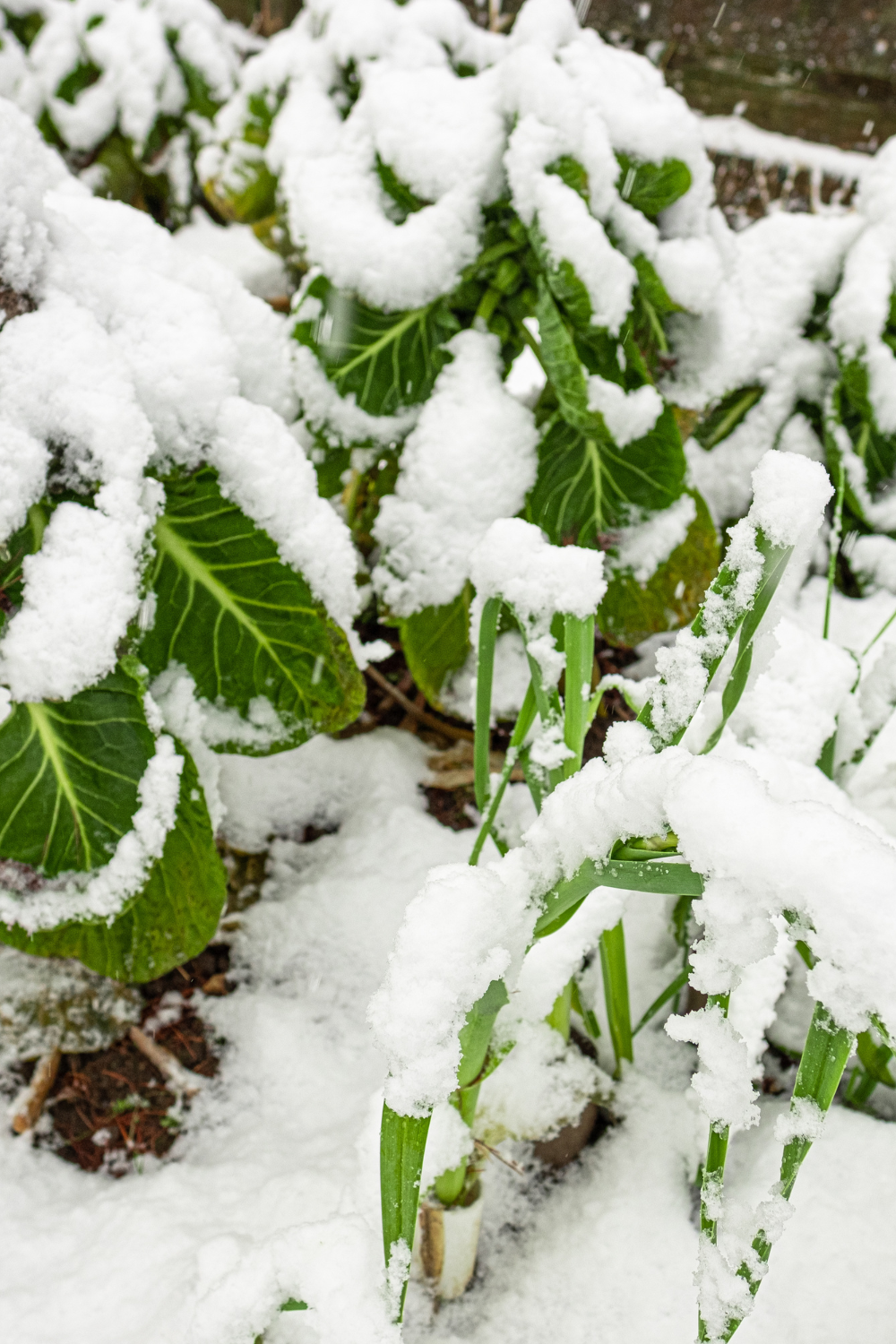
Before you can sow those winter greens, you need to get your garden in shape for the cold season. In this section, I’ll guide you through the necessary steps to prepare your garden beds for winter sowing. From clearing and cleaning the garden beds to soil preparation and amendments, I’ve got you covered.
Clearing and Cleaning the Garden Beds
Out with the old and in with the new! Before you sow your cold hardy greens, it’s essential to clear out any remnants of the previous season and remove any weeds or debris that may hinder their growth. A clean and tidy garden bed is like a blank canvas, ready to be filled with vibrant greens.
Soil Preparation and Amendments
Give your cold hardy greens the royal treatment by preparing nutrient-rich soil that will fuel their growth. In this section, we’ll discuss the importance of soil preparation and provide tips on enriching your soil with organic matter and amendments. Remember, healthy soil equals happy plants!
Winter Sowing Techniques for Cold Hardy Greens
Now that your garden is prepared for winter sowing, it’s time to get those seeds in the ground. In this section, I’ll explore the two main techniques for winter sowing cold hardy greens: direct sowing and transplanting. I’ll also discuss the optimal timing for sowing to ensure your greens have the best chance of survival and thriving throughout the winter months.
Direct Sowing vs. Transplanting
To sow or not to sow? That is the question. Both direct sowing and transplanting have their pros and cons when it comes to growing cold hardy greens. In this section, I’ll weigh the options and help you decide which technique is best suited for your gardening style and preferences.
Optimal Timing for Winter Sowing
Timing is everything, especially when it comes to winter sowing. In this section, I’ll delve into the optimal timing for sowing your cold hardy greens to ensure they have enough time to establish roots and flourish before the winter frost sets in. Get your calendars ready as we unlock the secrets to successful winter sowing timing.
Proper Care and Maintenance of Cold Hardy Greens during Winter
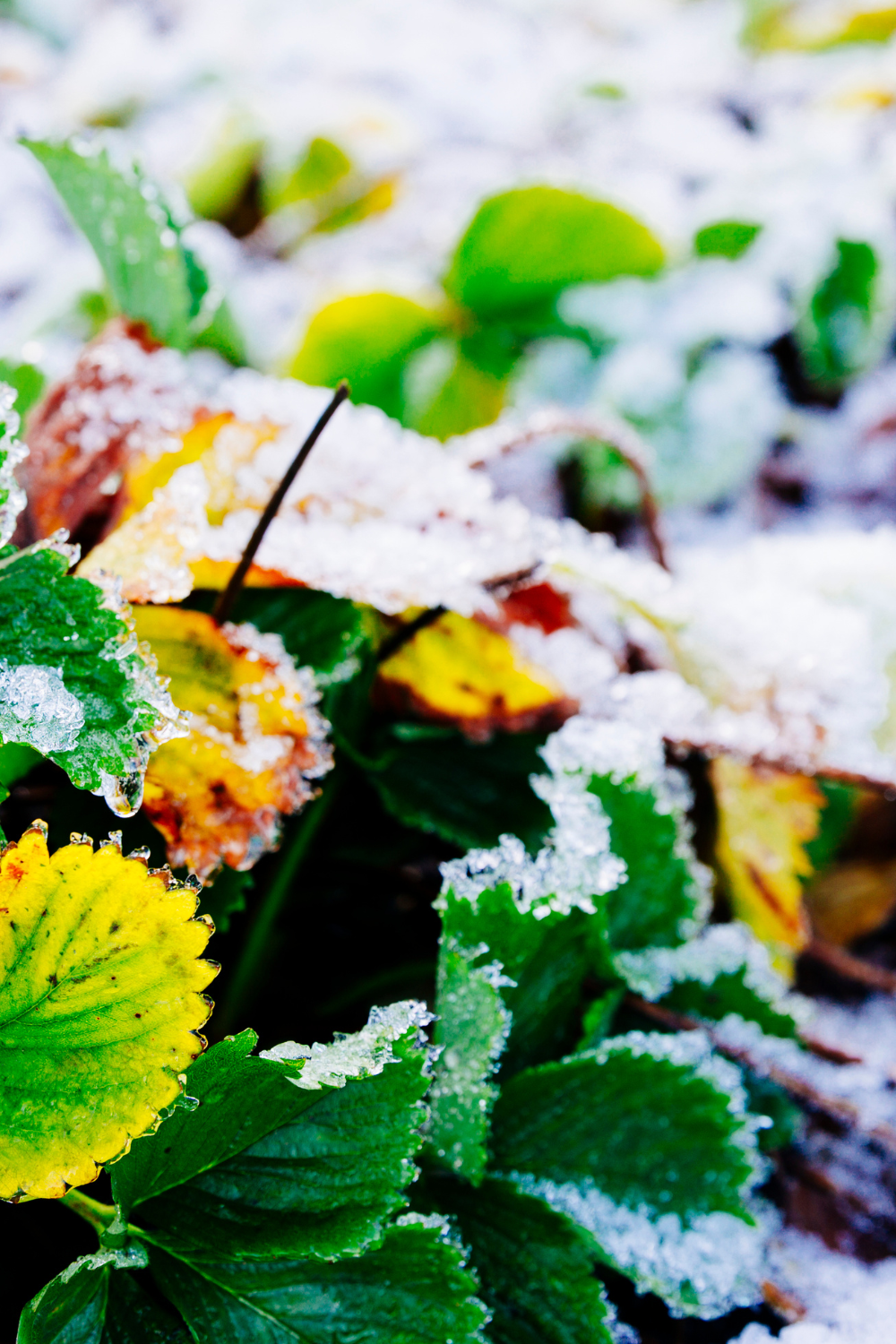
Watering and Irrigation Needs
When it comes to watering your cold hardy greens during winter, it’s important to strike a balance. On one hand, you don’t want to let them dry out completely, but on the other hand, you also don’t want to drown them in excessive water.
In general, these cold-hardy greens require less water than their warm-weather counterparts. You can reduce the frequency of watering, but make sure to provide sufficient moisture when you do water. The key is to water deeply, allowing the roots to access the water and encouraging healthy growth.
Mulching and Insulating Techniques
Mulching and insulating your cold hardy greens is like tucking them in with a cozy blanket for the winter. Mulch acts as a protective shield, keeping the soil temperature stable and preventing weed growth. It also helps retain moisture, reducing the need for frequent watering.
You can use a variety of materials for mulching, such as straw, shredded leaves, or even pine needles. Spread a layer of mulch around the base of your plants, making sure to avoid direct contact with the foliage. This will provide insulation and protection against extreme temperature fluctuations.
Harvesting and Using Cold Hardy Greens Throughout Winter
Knowing When to Harvest
One of the joys of growing cold hardy greens is having fresh produce during the winter months. But how do you know when it’s time to harvest? The good news is that these greens can tolerate colder temperatures, so you don’t have to rush to pick them all at once.
Start by monitoring the maturity of the leaves. Once they reach a usable size, you can begin harvesting. Remember that cold weather can actually enhance the flavor of these greens, so feel free to leave them in the garden until you’re ready to enjoy them.
Preserving and Storing Cold Hardy Greens
If you find yourself with an abundance of cold hardy greens, don’t fret! There are plenty of ways to preserve and store them for future use.
One popular method is blanching and freezing. Blanching involves briefly immersing the greens in boiling water, followed by an ice bath to stop the cooking process. Once blanched, you can pack them into airtight containers or freezer bags, and they’ll be ready to add to soups, stews, or stir-fries later on.
Another option is pickling. This adds a tangy twist to your greens and can be a great addition to salads or sandwiches. Simply prepare a brine solution with vinegar, spices, and salt, and then submerge your greens in the brine. Store them in sterilized jars in the refrigerator, and they’ll keep for several weeks.
Troubleshooting Common Challenges in Winter Sowing
Frost and Freezing Protection
Even though cold hardy greens can handle chilly temperatures, they still need some protection against severe frost and freezing. When a frost is expected, you can cover your plants with floating row covers or cloths to provide a barrier against the cold. This will help prevent frost damage and extend the growing season.
For extra protection during freezing nights, consider using lightweight frost blankets or even creating temporary mini-greenhouses with plastic sheeting. Just remember to remove the covers during the day to allow air circulation and prevent overheating.
Pest and Disease Control
While cold hardy greens are generally more resistant to pests and diseases, it doesn’t mean they’re invincible. Keep an eye out for common culprits like aphids, slugs, and cabbage worms. Handpicking or using organic pest control methods can help keep these critters at bay.
Proper crop rotation and good garden hygiene can also prevent diseases that might affect your greens. Remove any dead or diseased leaves promptly, and avoid overhead watering to minimize moisture on the foliage, which can lead to fungal infections.
Conclusion and Final Tips for Successful Winter Sowing
Winter sowing cold hardy greens is a rewarding endeavor that allows you to enjoy fresh produce even in the coldest months. With proper care, you can ensure a bountiful harvest throughout winter.
Remember to strike the right balance with watering, mulching, and insulation. Harvest your greens when they reach maturity, and explore different methods of preserving and storing the surplus. Don’t forget to protect your plants from frost and keep an eye out for pests and diseases.
So, bundle up, grab your gardening gloves, and let your cold hardy greens flourish this winter.
Growing cold hardy greens through winter sowing is a rewarding endeavor that allows you to harvest fresh, nutrient-rich greens even during the coldest months. By selecting the right varieties, preparing your garden appropriately, and providing adequate care and maintenance, you can enjoy a continuous supply of greens throughout winter. Remember to harvest at the right time and properly store your greens for long-lasting freshness. With these tips and techniques, you’ll be able to successfully grow cold hardy greens and savor their delicious flavors all winter long. Happy gardening!
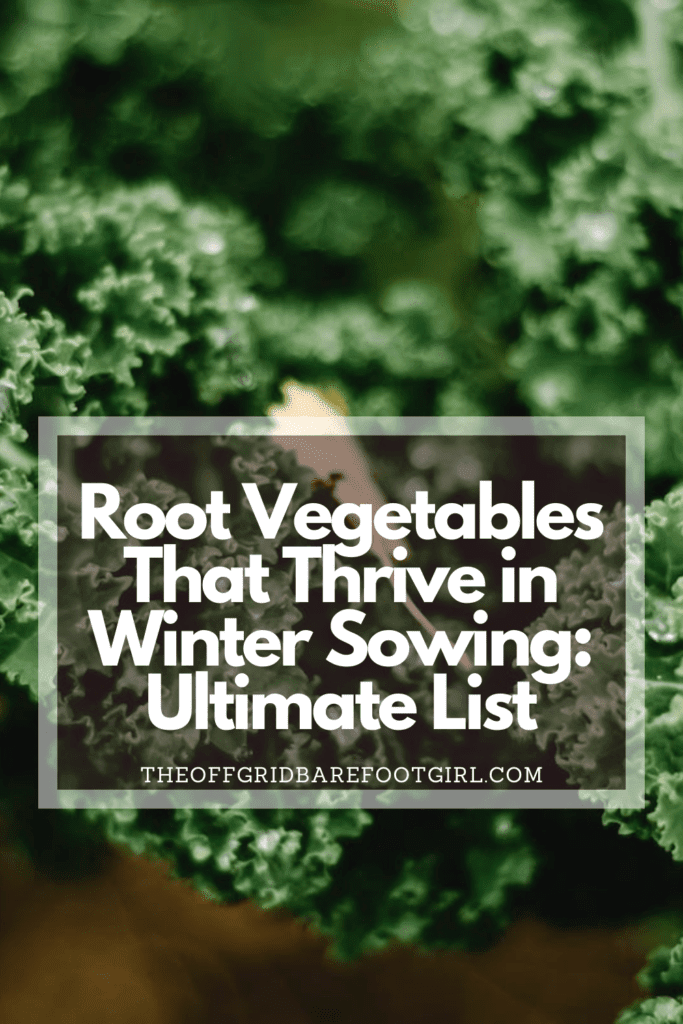
Frequently Asked Questions
1. Can I grow cold hardy greens without a greenhouse during winter?
Yes, you can grow cold hardy greens without a greenhouse during winter. These greens are specifically adapted to withstand colder temperatures and can thrive in outdoor garden beds or containers. By utilizing winter sowing techniques, proper insulation, and mulching, you can create a favorable environment for the growth of cold hardy greens even in the absence of a greenhouse.
2. How do I know when to harvest my cold hardy greens?
The timing of harvest for cold hardy greens depends on the specific variety and your desired level of maturity. Generally, you can start harvesting individual leaves as soon as they reach a size suitable for consumption. Alternatively, you can wait for the entire plant to mature and harvest it at once. Regularly monitor the growth of your greens and harvest when they have reached the desired size and flavor.
3. Can I store cold hardy greens for an extended period?
Yes, you can store cold hardy greens for an extended period. To maximize their shelf life, it is important to properly store them. After harvest, remove any damaged or wilted leaves, gently wash and dry the greens, and store them in airtight containers or plastic bags in the refrigerator. Cold hardy greens can stay fresh for up to a week when stored this way, allowing you to enjoy them over multiple meals.
4. Are there any pests or diseases that affect cold hardy greens during winter?
While cold hardy greens are generally more resilient to pests and diseases compared to warm-season crops, they can still be susceptible to certain issues during winter. Common pests include aphids, slugs, and snails. To prevent or manage these pests, regularly inspect your plants and employ organic pest control methods such as handpicking or using natural repellents. Additionally, ensuring proper airflow, avoiding overwatering, and practicing good hygiene in the garden can help prevent the occurrence of diseases such as fungal infections.
Summary
I hope I have inspired you to try your skills at winter sowing with these tips and products.
If you were encouraged by this post, I invite you to check out my FREE Printables Page for fun free printables, planners, and charts.
ENTER MY FREE Printables Page HERE
Here are some more of my winter gardening inspiration posts to check out!
Top Winter-Sowing Vegetables for a Head Start in the Garden
Getting Started with Winter Sowing: The Ultimate Guide
The Benefits of Successful Winter Sowing for Vegetables in Containers
The Ultimate Guide to Choosing the Best Soil for Winter Sowing
Planning Your Garden: How to Plan a Vegetable Garden: Expert Green Thumb Tips!
Winterizing the Garden: How to Winterize Your Vegetable Garden: Step-by-Step Checklist
Mulching the Garden: How to Make Leaf Litter Mulch
How to Grow a Fall Garden: 9 Best Fall Crops
Blessings,
The Off Grid Barefoot Girl



